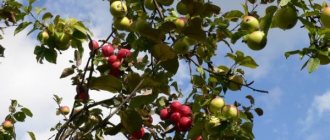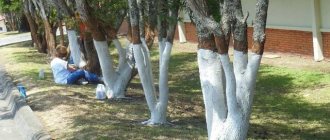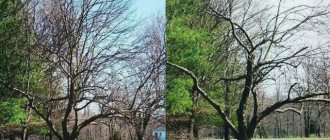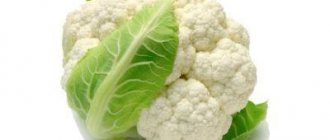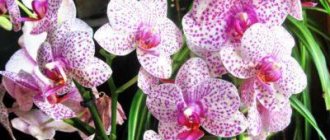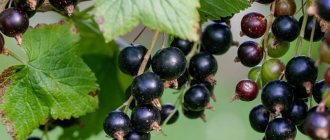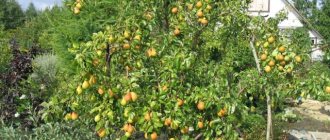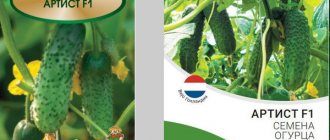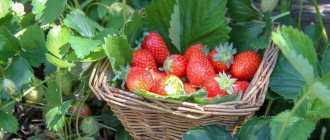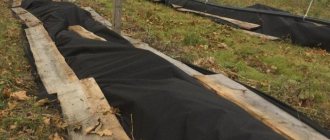- First feeding
- Application under the roots
Feeding an apple tree in the spring is an important agrotechnical measure, part of mandatory tree care, on which the quality of the future harvest largely depends. However, in order for this procedure to bring maximum benefit, it is important to choose not only the appropriate fertilizers, but also the right way to apply them.
The quality of fruiting of trees largely depends on timely and well-chosen fertilizers.
We invite you to consider all practical aspects and find out the opinions of experienced gardeners on how to properly feed an apple tree in the spring before flowering.
What microelements are needed by the apple tree?
For a rich harvest, regular care of apple trees is required, which includes fertilizer and fertilizing. For this purpose, organic matter, mineral fertilizers and microelements are used.
Organic matter saturates apple trees with potassium and nitrogen, which are necessary for the active growth and development of the tree and the formation of the crown. The apple tree needs phosphorus fertilizers for the development of the root system.
Often soils are poor in substances such as salts of iron, zinc, copper, boron, and sometimes magnesium and manganese. Deficiency or excess of microelements has a detrimental effect on the growth and development of the tree. For full fruiting, add:
- Nitrogen . If there is not enough of it, then the leaves become smaller, lose their color, and the fruits become smaller.
- Phosphorus . Due to its deficiency, the leaves also become smaller, plus the deficiency affects the number and size of the fruits. The trees have poor foliage and branch poorly.
- Magnesium . Signs that it is missing are: yellow or purple leaves with green veins, leaf fall at the end of summer, young leaves look like a mosaic.
- Potassium . Microelement deficiency leads to a change in leaf color and a decrease in fruit size.
- Iron . Deficiency contributes to the development of chlorosis, drying of leaves and their falling off.
- Zinc . It is necessary for the apple tree to form beautiful fruits that correspond to the varietal characteristics;
- Copper . If the plant does not receive it in sufficient quantity, then it begins to bush heavily, as the extensions of the shoots dry out and stop growing;
- Bor . The apple tree needs this microelement for resistance to frost. Its deficiency causes deformation and cracking of fruits.
Fungal diseases of apple trees
Fruit trees can be affected by fungus. The most common disease of apple trees is scab. The reasons are lack of air in the crown, which has not been pruned for a long time. The leaves become covered with black spots. The same thing happens with fruits. Urea solution and copper sulfate are the first remedy for fungus.
Basic rules for feeding apple trees
When fertilizing, follow the recommendations and instructions for using fertilizers. Violation of the dosage has a negative effect on plants. In addition, young apple trees are very sensitive, so there is no need to overdo it and add nutrients unnecessarily. It is extremely important to consider the following points:
- If all the necessary fertilizers were added to the planting hole when planting, there is no need to feed anything other than manure for the first years;
- On sandy and peaty soils, treat with a solution of microelements every spring;
- The interval between fertilizer applications should be at least two weeks;
- It is important to monitor the condition of the tree and stop feeding in time so as not to cause harm. Do not apply fertilizer less than 30 days before harvest;
- In order for the apple tree to fully develop, feed it 3-4 times a year;
- Do the first feeding before the buds begin to form;
- Apply the fertilizer solution at a distance of 50-60 cm from the trunk of the apple tree, otherwise the rhizome will suffer from the high concentration.
Rules for introducing spring fertilizing: what a gardener should know
Feeding an apple tree before and during flowering is a simple process that requires a little knowledge and the right approach. What should a gardener know when applying mineral fertilizers?
Adviсe:
- the application of organic and mineral fertilizers along the edge of the tree-trunk circle increases the effectiveness of the impact: thin root suction processes are located at the edge of the root system and the speed and completeness of consumption of useful substances is 100%;
- the dosage of fertilizer depends entirely on the variety, age, height of the apple tree; for short or young trees, the calculation of fertilizers should be reduced by 30%;
- mortar mixtures should be added to special holes dug around the perimeter of the tree trunk to prevent the liquid from spreading throughout the entire area around the tree (hole depth up to 30 cm);
- during the rainy period, fertilizing can be applied in dry form, simply by scattering the mixture evenly into the tree trunk groove; precipitation will “deliver” microelements to the roots;
- Columnar apple trees should be fed carefully; the roots of this variety are close to the surface of the soil and digging holes can severely damage the suction shoots. The best method is to scatter dry mixtures or water them under the roots.
Agricultural technology for applying fertilizers to an apple tree requires constant loosening of the soil: if the soil is waterlogged, fertilizers will be weakly absorbed into the soil, if it is too dry, the roots of the plant will receive little oxygen, fertilizing will not have any effect.
In early spring, deep loosening should be carried out (to a depth of 30 cm) at a distance of 60 cm from the trunk, at the trunk - to a depth of 20 cm. The optimal tool that is not capable of damaging the roots of plants is a garden fork; it is enough to stick it into the ground to the length of the forks and, tilting slightly, remove the tips back. It is not recommended to turn either a fork or a bayonet shovel inside the earthen clod; there is a great danger of damaging the root system of the fruit tree.
Removing weeds is the second mandatory part of the “program” that must be carried out before applying fertilizers. To increase the fertility of the tree, it is recommended to plant green manure (buckwheat and mustard) between the trees, which are mowed and dug up with soil right in the area under the trees before flowering. Did you know that young mustard leaves are an excellent addition to salads? This green manure has double benefits: both for the table and for the apple tree.
How to feed an apple tree
There are two types of fertilizing: root and foliar. Each has its own characteristics. Usually in the spring, fertilizers are applied at the roots, but in the summer the time is suitable for fertilizing the leaves. Let's look at both types in more detail.
Under the root
This type involves the use of fertilizers in the tree trunk. This space is around the perimeter of the tree crown. Step back from the trunk 0.5-0.6 m, or even a whole meter.
In order for the fertilizer to be better absorbed into the ground, or to prevent it from being washed away during rain, make small holes or grooves and pour powder or granules into them. You can also dig small depressions of 0.3 m in the amount of 10-15 pieces and pour nutrients into them. Then be sure to cover it with soil. Thanks to such methods, plant nutrition is provided for several years.
How to fertilize an apple tree when root feeding
In general, root feeding is carried out with liquid fertilizers in the form of solutions or granules, which are scattered in the tree trunk circle. In the first case, nutrients reach the roots of the tree faster, and the granules gradually dissolve from the rain. Therefore, it is better to do the latter in autumn or early spring.
Foliar feeding
Foliar or foliar feeding is carried out in the spring. To do this, spray the crown of the apple tree with nutrient solutions. Experts believe that foliar feeding is more effective when needed rather than on a regular basis. Leaves actively absorb nutrients. And the result will be visible in a couple of days. Foliar feeding works best when the plant lacks some elements.
Optimal conditions for spraying: cool and windless weather in the morning or evening.
Spray effectively:
- boron during the flowering period to improve fruit set, especially if pollinating insects do not fly in such weather;
- urea or carbamide in the spring;
- solution with macro- and microelements. To saturate the apple tree with nitrogen, use urea at a concentration of 0.3-0.5%.
There is enough phosphorus in superphosphate, but it is poorly soluble in water. Therefore, dilute it in boiling water in advance. Saturate with potassium by spraying with potassium sulfate. You can spray with ready-made preparations; they contain the required amount and percentage of elements.
But whatever preparation you choose for foliar feeding, it must be water-soluble. Experts advise combining nutrient sprays with pest and disease treatments such as fungicides, pesticides and insecticides.
It is important to understand that foliar and root feedings are not interchangeable. The latter are basic, and the former are additional.
Foliar fertilizers will not be able to replace root fertilizers and improve the condition of the tree as a whole, or fully saturate it with useful substances.
Types of fertilizers and features of their use
Modern industry provides gardeners with a wide range of products. You can choose fertilizer according to the time of year and the age of the plant. Conventionally, fertilizers are divided into the following groups:
- organic;
- mineral;
- microbiological;
- mineral-organic.
Useful microelements are introduced at the root, through spraying and watering. Separately, complex compounds are distinguished that contain phosphorus, potassium, and nitrogen. Microelements in different proportions are absorbed by the soil and the plant.
Mineral fertilizers are applied to holes or furrows
Organic
Organic fertilizers often include droppings, humus, manure and wood ash. The amount of feeding depends on:
- soil type;
- plant age;
- desired effect.
One mature fruit tree requires up to five buckets of organic fertilizer. It is used both in liquid form and in the form of compost. Organic matter is often scattered next to the trunk in the form of a circle.
Gardeners recommend applying in liquid form, since the crop absorbs microelements and nutrients better in a diluted state. Organic fertilizers are rich in potassium and nitrogen. Properly fertilized soil retains microelements even after heavy rains.
Manure and humus
For apple trees, fresh manure is added for digging in spring and autumn. On average, from five to ten kilograms of fresh fertilizer are used for each tree. During the formation of ovaries, it is advisable to add fertilizer in a diluted state. For young trees the ratio is one to ten, for adults – one to seven.
Expert opinion
Stanislav Pavlovich
Gardener with 17 years of experience and our expert
Ask a Question
Important! The manure must be left to rest for several days to get rid of excess ammonia compounds.
This especially applies to horse manure. In excessive quantities it can harm the root system. Therefore, it is not applied to the soil in its pure form, but is diluted in ratios of 1:10, 1:15. Humus from plant and animal residues is used without fear. The application rate is the same as for cow manure.
Bird droppings
Dry bird droppings can be used as useful organic matter. It is used exclusively for digging, as it contains a large amount of nitrogen. Apply in autumn and spring. If used later, the tree will form a large number of green shoots and the yield will suffer.
Advice! A solution of one hundred grams of droppings and fifteen liters of water is infused for five to ten days.
Wood ash
Excellent fertilizer for crops. Rids the soil of parasites and prevents re-infection. Reduces soil acidity. Sharply reduces the possibility of mold, mildew, and rot. When used correctly, it can become a substitute for monofertilizers containing potassium.
Mineral
Organic matter is widely used by gardeners, but sometimes mineral fertilizers cannot be replaced. The advantages of mineral fertilizers are that they do not provoke the development of fungus or the growth of weeds. If the soil is depleted, then organic matter will help saturate it, and mineral fertilizers will enrich it with useful microelements. You can achieve a lasting positive result by combining organic matter and mineral supplements.
See also How to properly form apple trees from planting to fruiting
The plant is enriched with calcium, nitrogen, and phosphorus. Fertilizing will be beneficial only if climatic conditions, soil characteristics, plant age and growing season are taken into account.
Complex fertilizers
Fertilizing with complex fertilizers prevents the development of diseases and pathological conditions. Some types of soils are depleted in nitrogen and magnesium, others in potassium. It is not always possible to study the composition of the soil. To ensure that the leaves do not turn yellow or fall off, and that the flowering and fruiting period is timely, nitrogen, phosphorus and potassium fertilizers are applied.
Expert opinion
Stanislav Pavlovich
Gardener with 17 years of experience and our expert
Ask a Question
Important! The fertilizer rate and method of fertilizing are indicated on the packaging.
Potassium
Helps young seedlings gain strength for growth and development. Has a positive effect on future fruiting. Trees saturated with potassium from a young age may not be afraid of fungus, mold, or pests. Potassium helps apple trees tolerate droughts, long periods of hot weather, and temperature changes.
Gardeners recommend fertilizing with potassium in the fall. In early spring, after a thaw, the soil will begin to “work” and release useful microelements to plants. Potassium salt, potassium sulfate and other compounds are used.
Phosphorus
The apple crop needs constant feeding with phosphorus. Complex fertilizers contain only a small amount of it. With a lack of minerals, the apple tree actively develops its root system. Flowering and fruiting occur on time, young shoots are formed evenly.
Advice! It is necessary to feed phosphorus separately, even if it was present in the complex supplement.
Nitrogen
Ammonium sulfate, microfertilizers, and potassium sulfate abundantly saturate the soil with nitrogen compounds. The soil around trees in early spring is depleted after debilitating winter frosts. During this period, nitrogen-containing compounds are introduced. Experienced gardeners use saltpeter to saturate the soil.
Fertilize the surrounding area regularly. Strictly follow the dosage. The abundance of nitrogen in the soil will negatively affect the growth and development of the plant. The soil risks becoming fertile ground for the development of fungi and parasites.
Folk recipes
Domesticated apple trees live longer than fifty years. Apple crop needs feeding even at the age of young seedlings. Growth stimulants, preventive compounds against pests - this increases the chance of survival. Young plants are fertilized with clay and peat in equal proportions, diluted with ten liters of water and a heteroauxin tablet is added.
The mash is suitable for lubricating the rhizomes of a young seedling. Can be applied as a complete fertilizer in late autumn and early spring. Strengthens mineral fertilizers, improves the absorption of microelements by plants. Also used:
- calcium nitrate;
- sodium humate;
- inkstone;
- ammonia;
- potassium chloride;
- boric acid.
The proportions depend on the age of the plant and the desired effect. The products are used either independently or added to solutions containing chicken manure, mullein, and urea.
How to fertilize an apple tree: types of fertilizers
All fertilizers are divided into two types: organic and mineral, complex. They provide the same benefits, but differ in the principle of action and timing of application.
Organic fertilizers
Organic matter refers to slowly decomposing organic compounds that contain large amounts of nitrogen and potassium. What types of organic matter are there and how to use them, read in the section - Organic fertilizers.
To provide apple trees with nitrogen, be sure to fertilize them with manure, guano, compost, and humus. Manure and compost must be well-rotted, otherwise the plants will get burned.
To saturate apple trees with potassium, add ash and ashes, lowland peat. Ash is especially useful as it contains a lot of potassium and saturates the soil with oxygen.
There are also many useful substances in compost meal from fish bones.
The best option is to use all types of organic matter as mulching material in the tree trunk circle.
You can also feed apple trees with vermicompost. Buy it from trusted places to avoid introducing pests and diseases.
Mineral fertilizers for apple trees
Fertilizers with potassium, phosphorus, and nitrogen can be separate or included in complex mixtures. These will already be mineral supplements. Mixtures are more popular because they are easy to calculate. The dosage will already be indicated on the package. In addition, complex fertilizer for apple trees is absorbed faster and begins to act. Follow the directions or the plants will be ruined. An excess of nitrogen leads to an overdeveloped crown, but no harvest.
Organic ones are less “dangerous”, but they do not contain the full range of necessary substances. Therefore, they are supplemented with minerals. Add phosphorus-potassium fertilizers for apple trees to manure, ash, and compost.
The following are used as mineral fertilizers for root feeding of apple trees:
- iron sulfate - in autumn;
- nitrogen fertilizers;
- ammonium nitrate - in the autumn;
- superphosphates.
Urea or urea is a popular fertilizer that provides nitrogen to the plant. But it needs to be used in the spring for the development of the crown and the formation of new shoots. And during fruit set, add nitrophoska.
What does an apple tree need for good fruiting?
For better growth, flowering and fruiting, organic, mineral, and complex fertilizers are applied. Gardeners do not forget to inspect plants for the presence of parasites, cut off excess shoots, form a crown, and whiten the trunks with lime.
For active growth and development of foliage, nitrogen-containing fertilizers and monocomponent mixtures are required. Complex compositions with nitrogen, potassium, and phosphorus are suitable for the formation of ovaries and abundant flowering.
Expert opinion
Stanislav Pavlovich
Gardener with 17 years of experience and our expert
Ask a Question
Important! Potassium is in demand closer to the period when the fruit tree begins to bloom.
Be sure to follow the instructions and observe the dosage. When applying fertilizers, there is a risk of overfilling the additives. A fruit tree will quickly “throw out” shoots, spend most of its energy on this and produce a minimal harvest.
How to fertilize an apple tree in spring
The question of how to feed an apple tree in the spring so that it bears fruit is a very important one. The quality of the harvest will depend on the correctly selected substances. In spring, give preference to fertilizers with a high nitrogen content. Feeding apple trees before flowering is aimed at feeding the tree during the active growing season so that it becomes strong and healthy.
Nitrogen-containing mineral fertilizers
But potassium and phosphorus fertilizers, such as potassium chloride, potassium salt, diammophos, should not be used, because they can provoke the development of chlorosis. In general, nitrogen should be stopped in June, otherwise the plant will not survive the winter well and may freeze.
In the spring, before the flowers begin to form, it is recommended to add the following minerals:
- Urea . Dilute - 20 g per bucket of water. Either water or spray.
- Ammonium nitrate - 30 g per bucket of water. Dig the fertilizer into the furrows or water it, but do not leave it in the air, as some of the nitrogen is lost upon contact with air.
Organics include:
- Chicken droppings . It is better to take a store-bought one, as it contains all the necessary macro- and microelements.
- Rotted compost or humus : 3-4 buckets per trunk circle.
- A solution of mullein or cow dung.
- Infusions of herbs , like nettle.
When feeding apple trees during and after flowering, you need to exclude nitrogenous fertilizers. Use potassium sulfate or superphosphate.
Depending on the condition of the plant after flowering, foliar feeding can be done. By the appearance of the apple tree, you can understand which microelement is missing and spray with the appropriate substances.
What fertilizers can be used in spring
Apple trees respond equally well to all types of fertilizers. Let's consider the main types of nutrition for this fruit tree.
Ready-made fertilizers for apple trees
When feeding apple trees (especially adult specimens), it is best to use ready-made complex solutions. Such preparations contain nitrogen, potassium and phosphorus, as well as other trace elements.
Firstly, this way you won’t forget about any component. Secondly, the tree will receive all the nutrients it needs, which means it will develop evenly.
Below are the most popular ready-made fertilizers that can be used with great efficiency on trees.
Nitroammofoska
The most popular complex fertilizer, which contains nitrogen, potassium and phosphorus in equal parts.
For watering, dilute 4 tablespoons of the product in a standard bucket. For a young tree, 1-2 buckets for watering are enough. An adult uses up to 4-5 buckets.
Gumi-Omi
In fact, this is a kind of compost, based on ordinary chicken droppings. Fertilizer is used to increase the yield and taste of fruits. Gumi-Omi also protects the tree from the adverse effects of the external environment, parasites and diseases.
Aquarin
Sold in plastic buckets. It differs in that it is quickly absorbed by the plant. This fertilizer can be used at all stages, as it contains all the necessary micro- and macroelements.
Plantafide
One of the best fertilizers for treating trees leaf by leaf. It can be used with equal success at almost all stages of seasonal development: from flowering to fruit formation.
Contains a whole complex of microelements in the form that is easiest for plants to assimilate.
Potassium humate
There are many brands, but the essence of the products remains the same. These are complex formulations with humates. They can be used either separately to strengthen the plant’s immunity, or added to other fertilizers to saturate apple trees with all the necessary nutrients at once.
ON A NOTE. All ready-made fertilizers must be diluted in strict accordance with the instructions supplied by the manufacturer.
How to apply mineral fertilizers
Almost all mineral fertilizers can be applied to apple trees.
Urea
Urea is applied in early spring or at the stage when flowering has ended, but the fruits have not yet begun to set.
Drug consumption rates:
- 3 tablespoons (30 g) per ten-liter bucket for root application.
- 1-2 tablespoons (10-30 g) per ten-liter bucket when processing one sheet at a time.
Ammonium nitrate
It is applied in early spring exclusively at the root. Fertilizer can be incorporated into the soil or diluted in water.
The consumption rate of the drug is 40 g per 1 sq. m for dry application and the same amount per bucket of water for irrigation.
Superphosphate
Superphosphate is applied before flowering. Better for the second feeding. To prepare a working solution, mix 4 tablespoons of the product and 10 liters of water.
Potassium sulfate
This fertilizer is best used for very mature trees. The fact is that if there is an excess of the drug, the tree can get a burn to the root system. Old apple trees have strong roots, so they can more easily withstand any impact.
The working solution is prepared from 50 grams of potassium sulfate and 10 liters of water.
Sodium humate
Mineral fertilizer that accelerates fruit ripening. Can be used in the second half of spring. Feeding is carried out by foliar method.
IMPORTANT! It is better to apply chloride fertilizers (potassium chloride, diammophos) in the fall so as not to provoke the development of chlorosis.
Feeding apple trees in summer
In June, you can feed the apple tree with phosphorus-potassium substances. It is recommended to take 20-30 grams of superphosphate and 15-20 grams of potassium sulfate.
In August, especially on sandy, thin, former peat bogs, nitrogen should not be used. Superphosphates and potassium sulfate are allowed. Apply fertilizers into special grooves or water the tree trunk.
During fruiting, fertilizers are not needed at all. If necessary, foliar spraying can be carried out with various complex solutions with microelements consisting of phosphorus and potassium. There shouldn't be any nitrogen at all .
Methods of feeding trees according to the seasons
Nutrients should be added not only in the spring, but also in the summer, as well as in the process of preparing trees for winter in the fall.
Fertilizers for apple trees in spring
In the spring, these fruit trees need to be fertilized to stimulate the growth of new shoots, green mass, and the root system. Therefore, in the spring, fertilizers containing a large amount of nitrogen are applied to the tree trunk circles:
- urea - up to 0.5 kg for each apple tree;
- nitroammophoska + ammonium nitrate - 1.5 tbsp. l. in each trunk circle;
- humus - up to 50 kg for an apple tree.
This fertilizer is applied before spring digging - first it is scattered along the diameter of the tree trunk circle, and then embedded in the ground during digging.
During the period of active bud formation, apple trees are fertilized as follows:
- 1 glass of superphosphate and 70 g of potassium sulfate are dissolved in a bucket of water;
- 2 kg of liquid chicken manure are diluted in a bucket of water;
- 5 kg of slurry per bucket of water;
- 300 g of urea per bucket of water.
Up to 4 buckets of any of the described fertilizers are applied to each apple tree.
It is better to apply fertilizers in liquid form to garden crops in dry weather. If it rains, then it is better to scatter the fertilizing around the tree trunk in dry form.
After the trees begin to form ovaries, they can be fed with the following fertilizer:
- 0.5 kg of nitrophoska;
- 10 g sodium humate in dry form.
If the foliage on the trees grows sufficiently, then foliar fertilizing with urea can be done.
Summer feeding of apple trees
In summer, apple trees are fed with mineral fertilizers, which include phosphorus and potassium, as well as a small amount of nitrogen. During this period, fertilizers are applied several times at intervals of 10-14 days.
In mid-June, you can feed these fruit trees “leaf by leaf” with a urea solution so that they receive a sufficient amount of nitrogen. But foliar fertilizing is applied only in dry weather, since rains quickly wash away the fertilizer from the foliage.
Fertilizing apple trees in the fall
In autumn, trees are fertilized by applying fertilizer to the tree trunk.
Can be used:
- A complex of mineral fertilizers for fruit trees, which can be purchased at any gardening store. Such preparations are diluted or applied to the soil dry according to the instructions for use. The dosages specified in the description cannot be exceeded.
- 25 g of potassium salt and 50 g of superphosphate are diluted in a bucket of water and fertilized with apple trees. This amount of solution is enough for a square area.
It is also recommended to add calcium to the soil in the fall. And if the soil is acidified, then lime should be added to it.
It is important to fertilize apple trees correctly and at the appropriate time. Only then will the tree grow strong, resistant to disease, and its productivity will be high. Fruit trees that have enough nutrients throughout the season have high immunity, tolerate winter frosts well and are practically not attacked by pests.
What fertilizers to apply in the fall for apple trees
It is in the fall that you carry out the main feeding of apple trees. It is recommended to do this in two stages: after harvesting and after the leaves fall. In the first case, during irrigation, use potassium magnesium, superphosphate, magnesium sulfate, and on shallow lands - potassium monophosphate. Count on 40-60 g of each substance for large trees.
After the leaves fall off, scatter rotted humus and compost under the tree. Mix it with ash, ash, potassium monophosphate, magnesium sulfate. On slightly acidic soils, the amount of humus is doubled and lime is added.
Be careful with the amount of mineral mixtures. Be sure to follow the instructions.
After the onset of cold weather, there is no need to feed apple trees for the winter. Plants need to prepare for winter and survive frosts.
Fertilizing before apple tree flowering: second stage
As soon as the first leaves appear on the trees, it is time for the second feeding before the fruit tree blooms.
Useful mineral mixture:
- 800 g of potassium sulfate;
- 1000 g of superphosphate;
- 5 liters of bird droppings (or 10 liters of slurry, or 500 g of urea);
- 200 liters of water.
Mix the feeding ingredients in a barrel and leave for 5-7 days for the components to completely dissolve. Mixture consumption for mature trees is up to 40 liters, for young trees - 25-30 liters. Advice: fertilizing should be done in dry, sunny weather; before adding the mixture, it is advisable to water the soil (1-2 buckets of water in the tree hole).
Green manure for apple trees
Some gardeners like to feed with green manure. This type of fertilizer involves digging up soil with green, freshly cut green manure grasses. They provide the plant with nutrients and nitrogen. You can learn about green manure in this section.
The procedure is suitable for early spring or summer. Green manures include legumes, peas, alfalfa, buckwheat and others. Some of the most popular articles on the site are about green manure - Phacelia as green manure and an article about when and how to sow and dig Mustard.
The need for fertilizing
Apple trees actively bear fruit for about half of their life, consuming a large amount of nutrients absorbed from the ground. As a result, the soil gradually loses its fertility, which affects the productivity of the garden. In addition, trees become more vulnerable to disease and pests. To keep your apple orchard healthy, it is recommended to regularly replenish the nutrients in the soil under the trees. This can be done by carrying out various mineral and organic fertilizing.
Fertilizers for planting pits for apple trees
The depth and width of the planting hole depends on the type of soil. It is usually about 1 m wide and up to 0.5 m wide. If the soil is clayey, then make it less deep and wider, and on sandy soil - vice versa.
Prepare the planting hole in the fall. Place drainage at the bottom, especially if the soil is clayey (river sand, sawdust), in the form of broken bricks, pebbles, expanded clay. Fertilizers when planting apple trees in the fall can be organic and mineral. Apply manure, compost, peat. Add 70-100 g of superphosphate, nitrofammophoska, potassium sulfate.
You can plant green manure around it: lupine, mustard, phacelia. Cut them back as soon as they start to bloom. Then they can be used to fertilize the tree trunk circle.
If the soil is acidic, then when forming a planting hole, add slaked lime at the rate of 0.6 g per square meter. m.
What fertilizers are applied to apple trees?
How to water an apricot - in the summer, during ripening and fruiting
For the proper development of trees and long and abundant fruiting, apple tree culture requires a complex of macro- and microelements: nitrogen, phosphorus, potassium, calcium, iron, zinc, copper, boron, magnesium. Macroelements are represented by mineral fertilizers in fertilizer or granular form. A complex of macro- and microelements is presented in organic fertilizers and complex organo-mineral chemicals in the form of soluble powders, granules or solutions.
Feeding calendar for apple trees
Many people wonder how to fertilize an apple tree month by month. As it turned out, ignorance of this can even lead to the fact that the apple tree will not produce a harvest. Experienced gardeners recommend the following calendar for feeding apple trees:
- April . As soon as the warm weather settles, the trees come out of hibernation, use urea 50 g per square meter. m. Then be sure to water the wood. Do not mix with superphosphates, lime and chalk. Urea or carbamide promotes the formation of a green crown, active growth and protection from scab.
- May . Dig holes in the tree trunk circle and pour a glass of ash, ashes, and ammophosphate into them. These substances are saturated with potassium and phosphorus. In the second half of the month, spray the apple trees with sodium or potassium humate. And after the ovaries form, treat the plants with Bud.
- June . At this time, add boron and copper. To do this, use solutions of boric acid and copper sulfate. Dilute 1 g of the substance in a bucket of warm water.
- July . In mid-summer, green manure can be planted in the tree trunk circle. And after a month, mow them down and bury them in the ground. In July, spray again with sodium or potassium humate.
- August . Feed the apple trees with phosphorus every 3 years. Be sure to water the tree thoroughly.
- September . Apply potassium sulfate annually at 25 g per square meter. m. A complex mixture also works well.
- October . At this time, nutrient mixtures are no longer applied, but they are engaged in mulching the soil around and preparing the trees for winter.
Apple tree care by month
Look
Fertilizing apple trees in natural farming
More and more people are abandoning mineral fertilizers and switching to natural farming. Basic natural supplements:
- compost;
- humus;
- herbal infusion;
- mulch;
- vermicompost;
- ash.
In early spring, add 1-2 buckets of compost or humus under the tree.
It is better to mulch the tree trunk circle under apple trees with organic matter.
After the soil has warmed up, the tree trunk circle is mulched with grass, lawn mowing, weeds, and watered with biological preparations for rapid rotting. Once every 10–14 days you need to water the apple tree with herbal infusion, Orgavit, and vermicompost.
The herbal infusion is made using beneficial bacteria.
- Finely chopped fresh greens of nettle, quinoa, dandelion, burdock or other weeds are placed in a bucket.
- Fill with water and add a handful of granulated horse manure or bird droppings.
- Sugar or old jam and bacteria from Siyanie or Baikal EM-1 preparations are added.
- Infuse the solution for 3–7 days.
- 1 liter of infusion is diluted in 10 liters of water and watered over the mulch.
Bacteria decompose organic matter and allow roots to quickly absorb nutrients.
Half a glass of the drug Radiance 3 fills the herbal infusion with beneficial bacteria
Foliar spraying on the leaf works very well, and you can dilute both liquid vermicompost and a special cocktail of Ecoberin granules, Healthy Garden and HB-101 drops.
In July, apple trees begin to be watered with an ash solution to enrich the soil with potassium and phosphorus.
Signs of nutritional deficiency
Caring for plums during fruiting, feeding in summer and autumn
In order to help a plant overcome nutritional problems in time, you need to know the signs of a deficiency of essential elements:
Lack of potassium in apple trees
- lack of nitrogen in the apple tree - the leaves become smaller, become pale green, shoot growth slows down, the fruits are small;
- lack of phosphorus - some leaves turn red-violet, development is delayed, winter hardiness of trees decreases;
- lack of potassium - a dry border appears along the edge of the leaf, “edge burn”;
- lack of iron - the leaves become pale, whitish in color, the space along the leaf veins may remain green;
- lack of magnesium - leaves turn yellow, fall off early, between the veins may remain green, sometimes chaotic brown spots appear;
- lack of zinc - the tops of young leaves have a black border;
- lack of copper - internodes become short, the plant bushes excessively;
- Lack of boron is manifested by poor fruit set, deformation and cracking of fruits, and decreased frost resistance of plants.
Lack of magnesium in apple trees
Note! Signs of a lack of nutrients appear externally when their deficiency is already moderate or severe, and the plant is experiencing general stress, so it is advisable to apply the necessary fertilizers without waiting for external manifestations.
Tips and tricks from experienced gardeners
The most common questions that novice gardeners have are:
- How to feed a young, non-fruiting apple tree in the summer. In young trees and seedlings, after planting, the root system that begins to grow often lags behind in development. Spraying with humic complexes 2-3 times during the summer helps to balance the growth of the above-ground and underground parts of the tree;
- how to feed columnar and low-growing apple trees. Such trees usually bear increased load. When planting, 10-12 kg of rotted manure and 40-50 g of fertilizer, including nitrogen, phosphorus and potassium, are added to the holes. After 2-3 years, they begin to fertilize the trees according to a scheme with five feedings;
- How to feed an aging apple tree during fruiting. Such trees need support in the form of organic matter, since their roots function normally, and aging branches can dry out, sooty fungus and other parasitic organisms settle on them.
Highly productive low-growing apple trees
Without exception, all varieties of apple trees are responsive to improved nutritional conditions. Using the given fertilizer application scheme, you can achieve a high yield of fruits with a normal content of nutrients, which will be stored until the next harvest.
